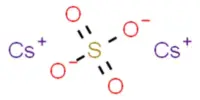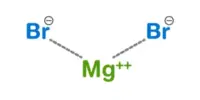Researchers have found a new type of chemical that may be effective against the trypanosome parasites that cause Chagas disease and human African trypanosomiasis (also known as sleeping sickness).
Researchers at the University of Glasgow and Novartis Global Health (formerly Novartis Institutes for Tropical Diseases) have found powerful compounds that have the potential to be developed into new treatments for the two distinct types of trypanosomiases, according to findings published in the journal Science.
In a mouse model of sleeping sickness, the compounds were shown to be effective with just one dose, and in the same models of Chagas disease, they were effective with a brief course of daily doses given over five days.
Around 70 million individuals in sub-Saharan African nations are at danger of African trypanosomiasis, also known as sleeping sickness, which is always fatal if left untreated or not properly treated.
Parasitic sleeping sickness, also known as African trypanosomiasis, is a potentially fatal disease caused by parasites of the species Trypanosoma brucei. It is transmitted to humans through the bite of infected tsetse flies, which are found in certain regions of sub-Saharan Africa.
Meanwhile, around 7 million people are currently infected by Chagas disease, which can cause irreversible damage to the heart and digestive tract. There are currently no drugs available that effectively cure Chagas disease; while for sleeping sickness, there have been some steps toward new therapies in recent years.
The researchers also show in the study exactly how the compounds, called cyanotriazoles (or CTs for short), kill parasites without adversely affecting host cells. These compounds selectively bind to a parasite enzyme (called topoisomerase II) that is essential for the replication and maintenance of DNA, which carries the genetic blueprint vital for life.
The substances cause DNA breaks that render the parasites dead by attaching to and blocking this enzyme.
The Glasgow group, led by Professor Mike Barrett from the Wellcome Center for Integrative Parasitology in the University’s School of infection & Immunity, made inroads into finding that mechanism of action using a technique known as metabolomics, through the Glasgow Polyomics facility, which showed how DNA was being degraded in the cells.
Topoisomerase proteins in parasites that were resistant to the medications have altered structures that prevented them from binding the medication.
The Novartis team, led by Srini Rao, worked out the three-dimensional structure of the trypanosome’s topoisomerase, revealing how CTs bind to a particular part of the trypanosome’s enzyme that is absent from the human version.
Mike Barrett, Professor of Biochemical Parasitology at the University of Glasgow, said, “Compounds with this degree of potency, working through a newly discovered mechanism, represent a major breakthrough. If they are proven to be safe in humans and retain the levels of activity seen in mice, they could offer the first effective therapy of Chagas disease which afflicts millions of people in Latin America.”
















